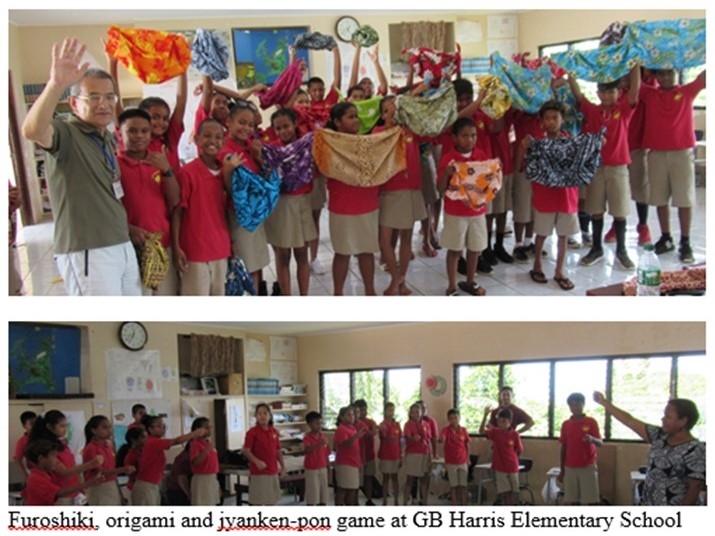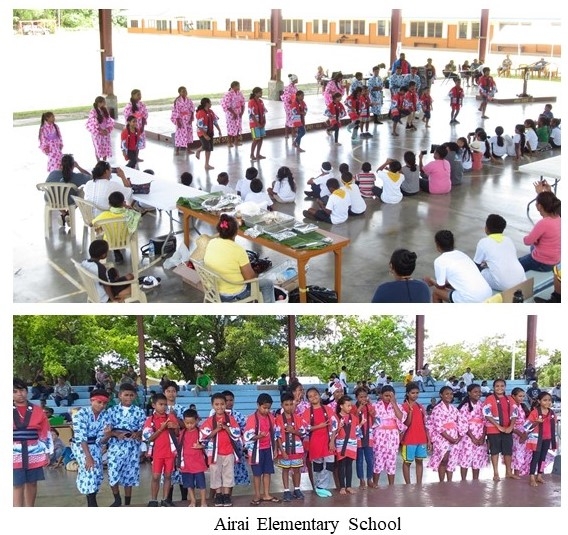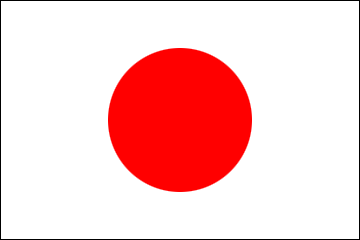Students learn about Japanese culture during the Educational Awareness Week 2020
2020/3/26
During the Education Awareness Week (March 17-20) organized annually by the Ministry of Education, Embassy of Japan visited selected schools to introduce Japanese culture through showing of movies, power point presentations and hands-on activities.
Two movies about Japanese culture were shown at Emmaus-Bethania High School and Belau Modekngei High School. Eighteen students and staffs of Belau Modekngei High School and more than 50 students and staffs of Emmaus-Bethania High School watched Japanese movies as an activity during Educational Awareness Week. The students all applauded during a scene in the movie and the movie is very relatable to high school students.

At GB Harris Elementary school, about thirty six 6th grade students and teachers learned about the relations and history between Japan and Palau and had the opportunity to do some hands-on activities. They learned how to make paper crane using origami and how to use furoshiki to make a hand bag. Furoshiki is a Japanese word which is a fabric used for wrapping things such as bento or gifts. Introduced by Japanese people many years ago, the culture of using furoshiki or beroski as it is called in Palauan language, is used by Palauan women even today. In addition, students enjoyed jyanken-pon game (aikodesio or aikodejio in Palauan), and learned about Japanese originated Palauan words. The students knew many words, such as names of vegetables and names of things that they see around them every day.

On March 20, Japan Embassy staff visited Airai Elementary School during the schools’ International Day event. The students learned to wrap boxes, bottles and make hand bags using furoshiki. They also learned how to make samurai helmets using newspapers. Some of the kids tried to play a Japanese wooden toy called kendama while some of the students looked with curiosity at the otedama known as ossarai in Palauan language. In the afternoon of the same day, the Japan team was the last on the program to show their dance performance. They were all dressed up in Japanese summer kimono known as yukata and some dressed in a festival costume called happi for their performance. They performed the Olympic dance or Olympic ondo which they learned in about one week.

The Embassy of Japan hopes to continue sharing Japanese culture, some of which are commonly shared culture, such as the use of furoshiki (beroski), otedama (ossarai), jyanken-pon game (aikodesio) and shared language, with the people of Palau, to promote mutual understanding and to foster friendly relations between Japan and Palau.
Two movies about Japanese culture were shown at Emmaus-Bethania High School and Belau Modekngei High School. Eighteen students and staffs of Belau Modekngei High School and more than 50 students and staffs of Emmaus-Bethania High School watched Japanese movies as an activity during Educational Awareness Week. The students all applauded during a scene in the movie and the movie is very relatable to high school students.

At GB Harris Elementary school, about thirty six 6th grade students and teachers learned about the relations and history between Japan and Palau and had the opportunity to do some hands-on activities. They learned how to make paper crane using origami and how to use furoshiki to make a hand bag. Furoshiki is a Japanese word which is a fabric used for wrapping things such as bento or gifts. Introduced by Japanese people many years ago, the culture of using furoshiki or beroski as it is called in Palauan language, is used by Palauan women even today. In addition, students enjoyed jyanken-pon game (aikodesio or aikodejio in Palauan), and learned about Japanese originated Palauan words. The students knew many words, such as names of vegetables and names of things that they see around them every day.

On March 20, Japan Embassy staff visited Airai Elementary School during the schools’ International Day event. The students learned to wrap boxes, bottles and make hand bags using furoshiki. They also learned how to make samurai helmets using newspapers. Some of the kids tried to play a Japanese wooden toy called kendama while some of the students looked with curiosity at the otedama known as ossarai in Palauan language. In the afternoon of the same day, the Japan team was the last on the program to show their dance performance. They were all dressed up in Japanese summer kimono known as yukata and some dressed in a festival costume called happi for their performance. They performed the Olympic dance or Olympic ondo which they learned in about one week.

The Embassy of Japan hopes to continue sharing Japanese culture, some of which are commonly shared culture, such as the use of furoshiki (beroski), otedama (ossarai), jyanken-pon game (aikodesio) and shared language, with the people of Palau, to promote mutual understanding and to foster friendly relations between Japan and Palau.
